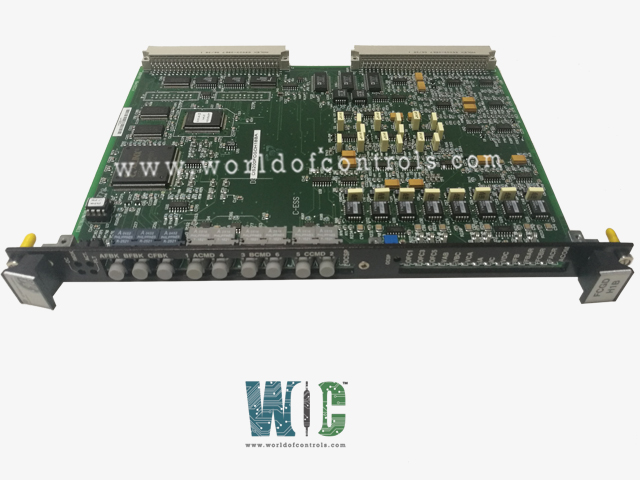
World Of Controls understands the criticality of your requirement and works towards reducing the lead time as much as possible.
DS200FCGDH1B - Gate Distribution and Status Card is available in stock which ships the same day.
DS200FCGDH1B - Gate Distribution and Status Card comes in UNUSED as well as REBUILT condition.
To avail our best deals for DS200FCGDH1B - Gate Distribution and Status Card, contact us and we will get back to you within 24 hours.
SPECIFICATIONS:
Part No: DS200FCGDH1B
Manufacturer: General Electric
Product Type: Gate Distribution and Status Card
Function: DIN-rail mounting
Series: Mark VI
Number of Channels: 12
Span: -8 mV to +45 mV
Operating temperature: -30 to 65 ºC
Power Supply Voltage: 24 V dc
Board Size: 9.2x6.3 inch
Weight: 0.45 kg
Availability: In Stock
Country of Origin: USA
Manual: GEI-100221
FUNCTIONAL DESCRIPTION:
DS200FCGDH1B is a Gate Distribution and Status Card manufactured and designed by General Electric as part of the Mark VI Series used in GE Speedtronic Control Systems. An interface board for a 6-pulse phase-controlled, non-reversing bridge is called the Gate Distribution and Status Card (FCGD). Through the VME backplane, it transmits feedback and diagnostic data after receiving SCR firing data from the DS200DSPC (DSPC, the VME processor) chip. The FCGD receives a multiplexed cell status signal from each bridge leg and decodes and de-tributes the cell gating signals for each bridge leg. Additionally, it takes in bridge feedback signals, scales them, and then transmits the voltage, frequency, and current status data back to the DSPC board.
BOARD FUNCTIONS:
WOC has the largest Stock of GE Speedtronic Gas Turbine Control System OEM Replacement Parts. We can also repair your faulty boards and supply unused and rebuilt boards backed up with a warranty. Our team of experts is available round the clock to support your OEM needs. Our team of experts at WOC is happy to assist you with any of your automation requirements. For pricing and availability on any parts and repairs, kindly contact our team by phone or email.
What is a Gate Distribution and Status Card?
A Gate Distribution and Status Card is a critical component used in control systems to manage and distribute signals or data between various components. It is commonly utilized in industrial environments, such as power plants, manufacturing units, and automated systems, where it plays an essential role in monitoring and controlling processes. These cards are designed to ensure efficient data flow and operational reliability.
What are the main functions of a Gate Distribution and Status Card?
The primary functions of a Gate Distribution and Status Card include signal distribution, status monitoring, error detection, and data synchronization. The card routes control signals to different subsystems within a system, monitor their operational status in real-time, detect and report faults or irregularities, and ensures that data is consistent and synchronized between components. These capabilities are vital for maintaining the smooth and efficient operation of complex industrial systems.
Where is a Gate Distribution and Status Card typically used?
Gate Distribution and Status Cards are typically used in various industrial settings, such as power plants where they manage turbine control systems, manufacturing environments for process control, and robotics or motion control systems. These cards ensure reliable signal routing and status updates in automated environments, making them essential for maintaining operational efficiency and safety.